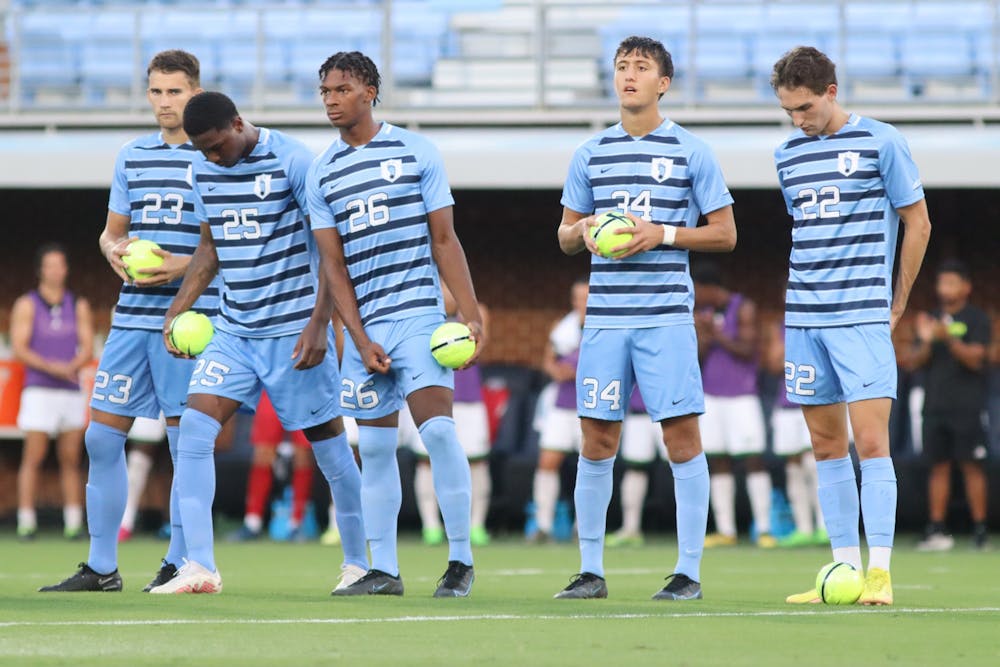After falling to Syracuse in the quarterfinals of the ACC Championship, the UNC men’s soccer team earned an at-large bid in the NCAA Tournament. The Tar Heels will play High Point on Thursday at noon in their first-round matchup, hoping to craft a Cinderella run similar to what the team pulled off in the spring of 2021.
The Tar Heels boast a talented defense but an inconsistent offense, resulting in an 8-5-5 record and fourth-place finish in the ACC Coastal division.
Here are three key statistics that have defined UNC’s performances thus far.
10.39 — Shots per game
The Tar Heels’ formation has been mainly spearheaded by junior forward Akeim Clarke, who has tallied four goals this season. However, despite the notable performances of the front line, UNC has struggled to control the ball in the back and middle parts of the pitch. As a result, forwards often feel compelled to drop deep in order to assist in ball possession, creating a 3-6-1 or even a 3-7-0 formation that has minimized attack opportunities.
The extra players in the middle of the field occasionally prove to be effective in maintaining possession. However, the tactic significantly reduces the Tar Heels' number of attempts and accurate shots per game.
As of Nov. 16, UNC has only attempted 4.44 shots on goal per contest, ranking 137th in the nation. The Tar Heels have an even larger deficit in total attempts per game with 10.39, which ranks 144th nationwide. The poor attacking output is caused by a lack of link-up from the midfield to the forwards. As forwards drop back to get involved, less options are available up front for creative passes.
This phenomenon helps explain why the build-up play often seems delayed and lazy. It's not due to a low player work rate, but the abilities of forwards to spread the field and allow room for line-breaking passes that would result in more shots and goals.



